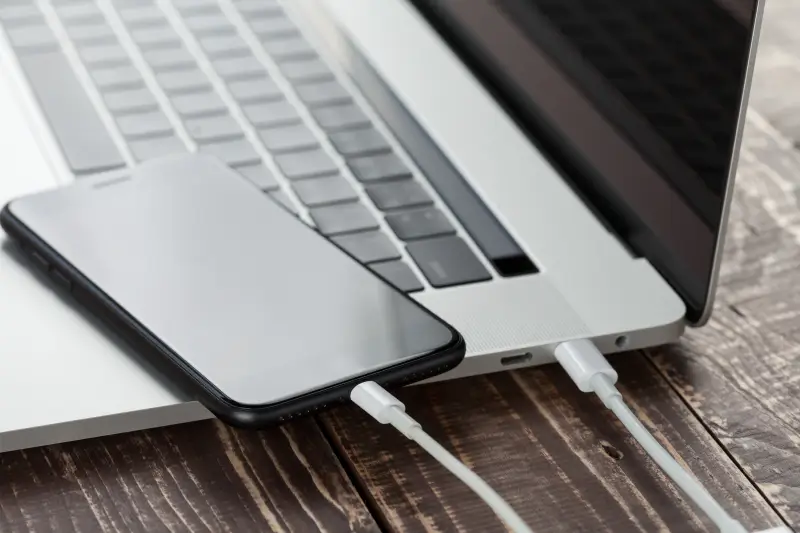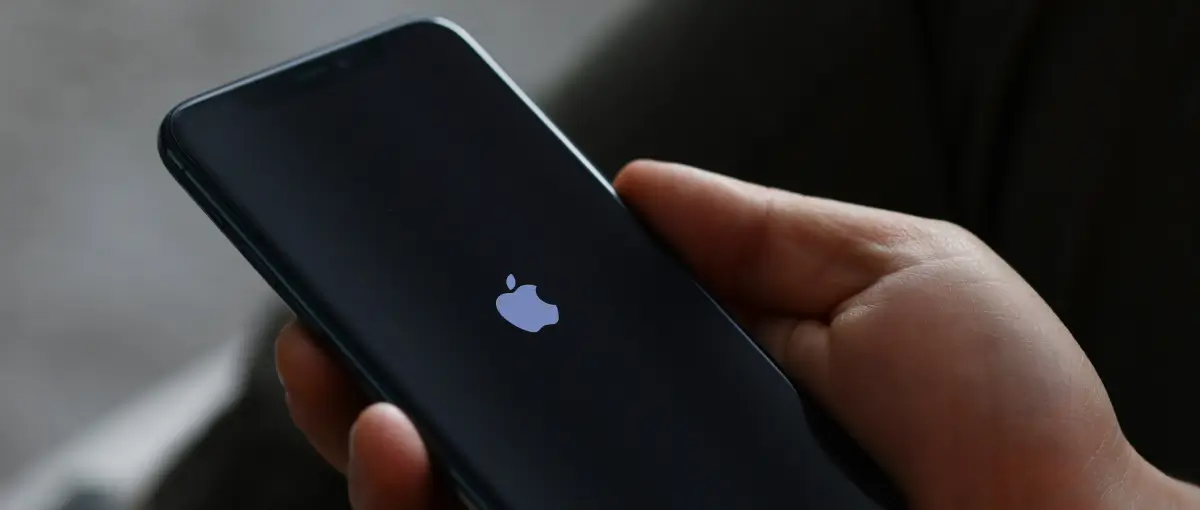Restoring from a backup is a vital process for virtually all iPhone users when looking to recover data after a device failure, upgrade, or reset. This procedure ensures that valuable information from a previous backup is transferred to the device, but also maintains personal settings and preferences. The data usually includes contacts, photos, messages, and app data, depending on which items were included in the backup.
Secure Data Recovery, specialists in RAID, SSD, and hard drive recovery, provide a detailed guide on effectively restoring an iPhone from a backup.
Understanding iPhone Backups
Whether setting up a new iPhone or recovering from a technical issue, understanding how to restore from a backup is essential. A backup acts as a snapshot of an iPhone at a given moment, which can be invaluable in situations like losing a device, damage, or when upgrading to a new device. The peace of mind that comes with knowing all of your iPhone’s data is securely stored and can be easily restored cannot be overstated.
When it comes to iPhone backups, there are two primary methods; iCloud on the iPhone itself and using a computer with iTunes or Finder.
- iCloud Backups: iCloud backups are stored in the cloud and can be completed automatically when the iPhone is locked and connected to Wi-Fi and power. This method backs up almost all data and settings on the iPhone, but it does not include data already stored in the cloud such as contacts or notes.
- Local Backups: For those who prefer local backups, iTunes (on Windows and older Macs) and Finder (on Macs with macOS Catalina or later installed) offer an alternative. These backups are stored on your computer, providing security for those wary of cloud-based solutions. Unlike iCloud, iTunes and Finder backups can include saved passwords, Wi-Fi settings, website history, and health data. However, they require manual initiation and connection to a computer, making them less convenient than automated iCloud backups.
Most users simply switch on iCloud backups and allow them to operate in the background, with no further need for user interaction. iTunes and Finder backups are an older and more involved method of backing up an iPhone, typically only preferred by some users that have run out of iCloud storage or have specific reasons to use a local backup.
Note: iCloud is a good method for restoring an old iPhone after an upgrade, which is the likeliest scenario. However, it is important to note that it is technically a synchronization service. That means deleting a photo on your iPhone will also delete it from your iCloud when it syncs. For best results, back up your iPhone with an additional method.
 Whichever backup method is chosen, users should ensure their backups are current and complete before attempting to restore an iPhone if possible. With iCloud backups, check the last backup date by going to Settings, tapping Apple ID, selecting iCloud, and then iCloud Backup. For iTunes or Finder backups, open the application on the computer, connect the iPhone, and check the date of the most recent backup under the device’s summary section.
Whichever backup method is chosen, users should ensure their backups are current and complete before attempting to restore an iPhone if possible. With iCloud backups, check the last backup date by going to Settings, tapping Apple ID, selecting iCloud, and then iCloud Backup. For iTunes or Finder backups, open the application on the computer, connect the iPhone, and check the date of the most recent backup under the device’s summary section.
Next, assess the storage space on your iPhone. The amount of data to be restored must not exceed the available space on your device. If the backup is larger than the target iPhone's capacity, it may be necessary to free up space by deleting unnecessary files or apps before backing up.
Restoring From an iCloud Backup
Restoring an iPhone from an iCloud backup is a straightforward process, ideal for getting the device back up and running with your personal data, settings, and apps intact.
- Begin the Setup Process: Turn on the new or restored iPhone to be greeted by the “Hello” screen. Follow the on-screen instructions until the “Apps & Data” screen appears.
- Select Restore from iCloud Backup: On the “Apps & Data” screen, choose the “Restore from iCloud Backup” option.
- Sign in to iCloud: Sign in with the Apple ID linked to the backup you intend to restore.
- Choose the Backup: Choose the most relevant backup, typically the most recent one, from the list of available backups. The time and date of each backup are displayed to help you decide.
- Start the Restoration Process: After selecting the backup, the restoration process begins. The iPhone will start downloading all the data from iCloud, including apps, settings, and personal files. The time this takes depends on the size of the backup and the speed of the internet connection.
- Complete the Setup: Follow any additional on-screen instructions to complete the setup of the iPhone.
If the restoration process seems slow, it is likely simply due to the speed of the Wi-Fi network the iPhone is connected to. Sometimes restarting the router can improve connection stability, but connecting directly via ethernet is possible with the correct adapter. If some apps or data are missing after the restoration, it could be due to interruptions in the internet connection. In this instance, it may be necessary to manually redownload apps or erase the iPhone and restore from the iCloud backup again.
Restoring From a Computer Backup (iTunes and Finder)

Restoring an iPhone from a computer backup is a reliable method, especially for those who prefer physical storage over cloud solutions. Here's how to restore an iPhone using iTunes (for Windows or older Macs) or Finder (for macOS Catalina and later):
Restoring from iTunes
- Open iTunes and Connect the iPhone: Launch iTunes on the computer. Use a USB cable to connect the iPhone to the computer. If iTunes shows a prompt to enter the device passcode or to Trust This Computer, follow the onscreen steps.
- Select the iPhone: In iTunes, look for the iPhone icon in the upper left corner and click on it.
- Choose Restore Backup: Under the “Backups” section, click on “Restore Backup.” Choose the most relevant backup by looking at the date and size of each backup file.
- Start the Restoration Process: After selecting the backup, click “Restore” and wait for the process to complete. Keep the iPhone connected to the computer until it restarts and syncs with the computer.
Restoring from Finder
- Connect Your iPhone and Open Finder: Connect the iPhone to the Mac using a USB cable. Open a new Finder window.
- Select the iPhone: In Finder, under “Locations,” the iPhone should be listed. Click on it.
- Initiate the Restore Process: In the “General” tab, click on “Restore Backup.” Choose the preferred backup to restore from, typically the most recent one.
- Complete the Restoration: Click “Restore” and wait for the process to finish. Keep the device connected until it restarts and syncs with the Mac.
Ensure that the iPhone remains connected throughout the process. If it gets disconnected, restart the process.
Post-Restoration Steps and When to Seek Help
After the restoration process, it is important to ensure all your data is correctly and completely recovered. Start by checking contacts, messages, photos, and apps to verify that they are present and up to date. Also, review settings to confirm that preferences like Wi-Fi networks, notifications, and any custom configurations are accurately restored. If it seems that data is missing, a few steps can help:
- Restart Your iPhone: Often, a simple restart can resolve minor glitches, refreshing the system and allowing data to appear correctly.
- Check iCloud Sync: Ensure the device is correctly logged into an iCloud account and that sync settings for specific data types like contacts or calendars are enabled.
- Redownload Apps: If apps are missing, redownload them from the App Store. App data included in the backup should be restored.
- Recheck Backup Sources: Confirm that the iCloud backup was complete and up-to-date, or for iTunes/Finder backups, ensure the correct backup file was selected.
- Consider Alternative Backups: If the primary backup does not restore data as expected, consider using an alternative backup.
These post-restoration steps are essential to ensure the iPhone is fully functional with all necessary data intact. However, certain situations might present challenges requiring professional intervention.
Secure Data Recovery Can Help
Secure Data Recovery offers specialized services to address complex issues beyond standard restoration processes. Employing a team of Apple-certified technicians2 that specialize in the retrieval of lost files from iPhones, among other Apple devices.
Scenarios that require their expertise include corrupted backups, whether in iCloud or on a computer through iTunes or Finder, that fail to restore properly. Failed restoration attempts, especially those that repeatedly halt or fail, could indicate deeper underlying hardware problems or severe data corruption. Significant data discrepancies or losses noted post-restoration can also be rectified by our team.
With advanced data recovery techniques, Secure Data Recovery is equipped to handle various iPhone recovery scenarios, including physically damaged iPhones or those with severe software issues. Give us a call if you are experiencing issues with your Apple device.








